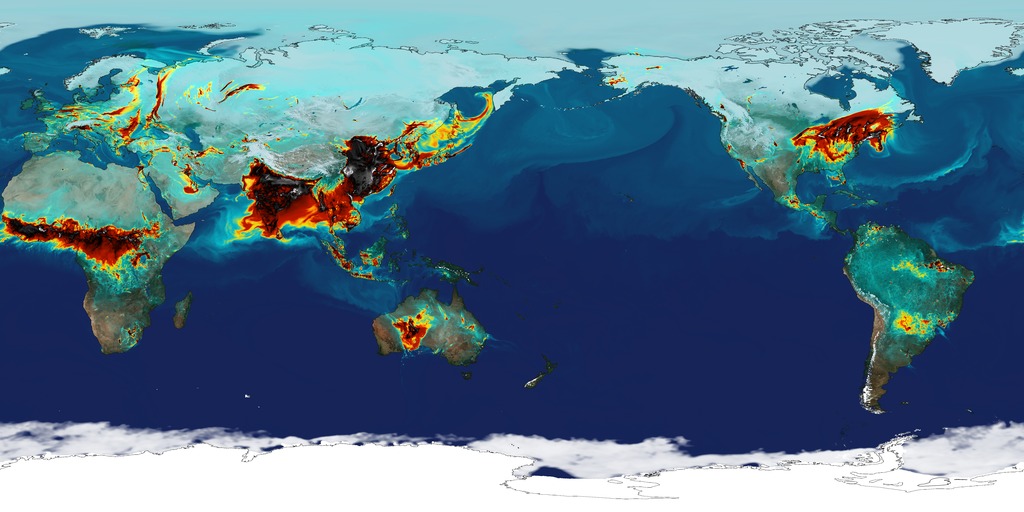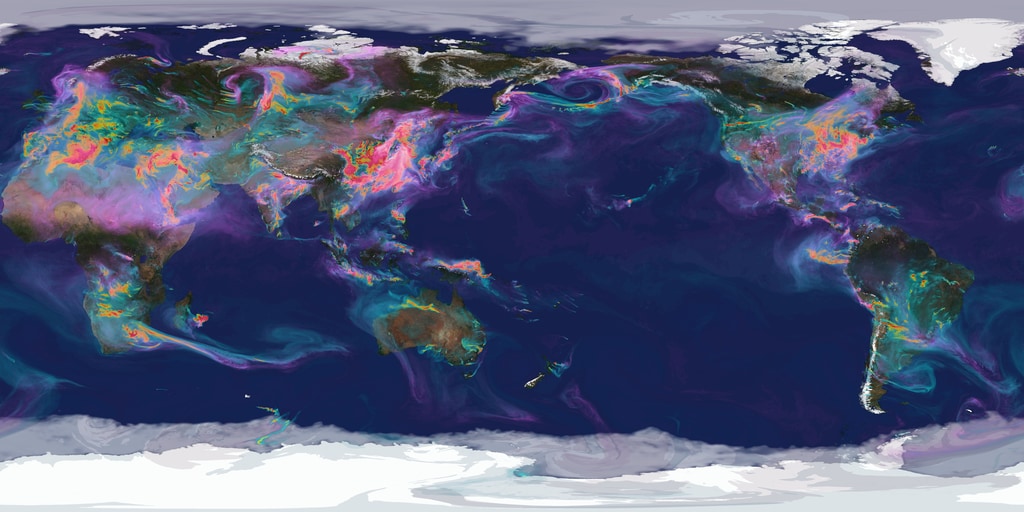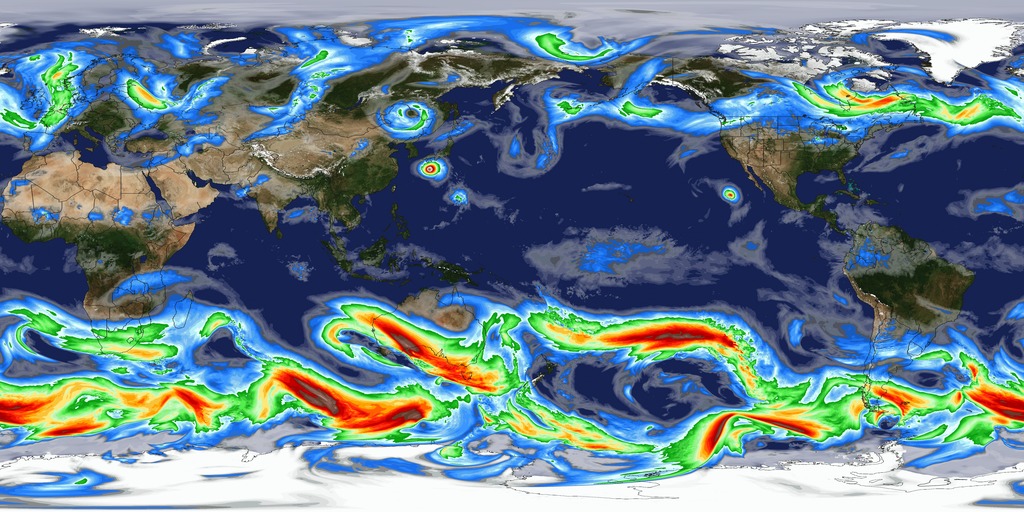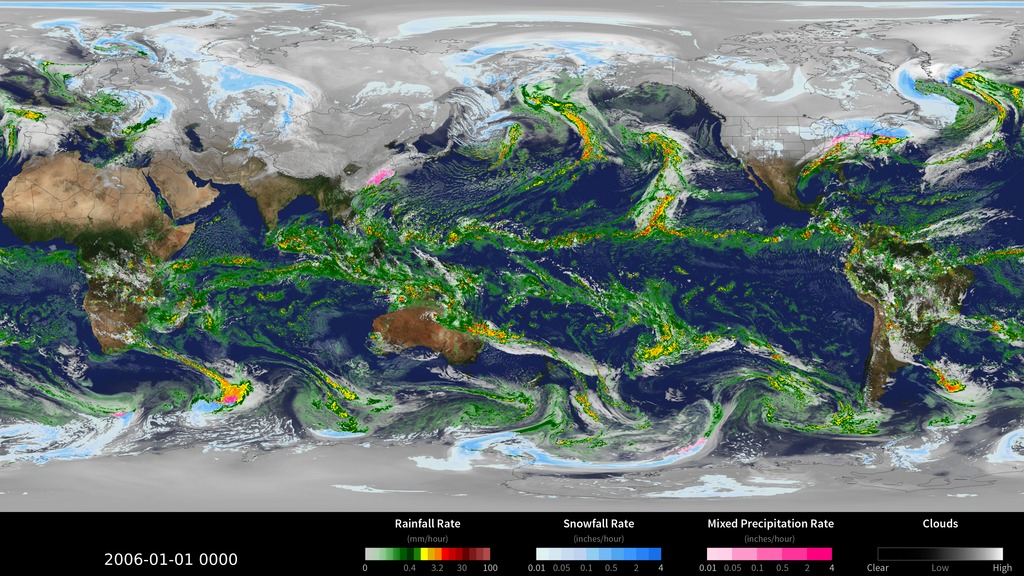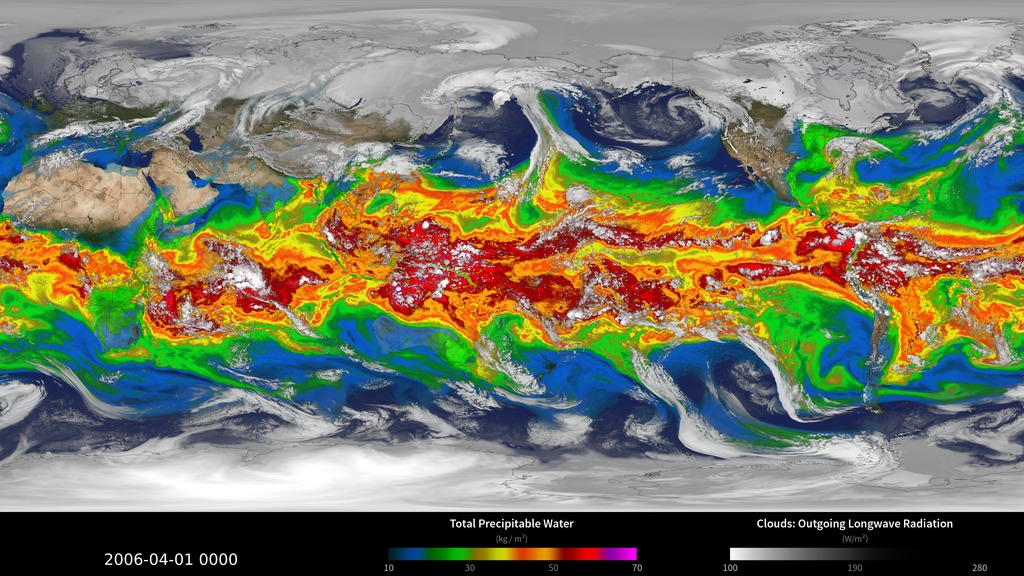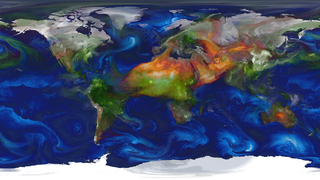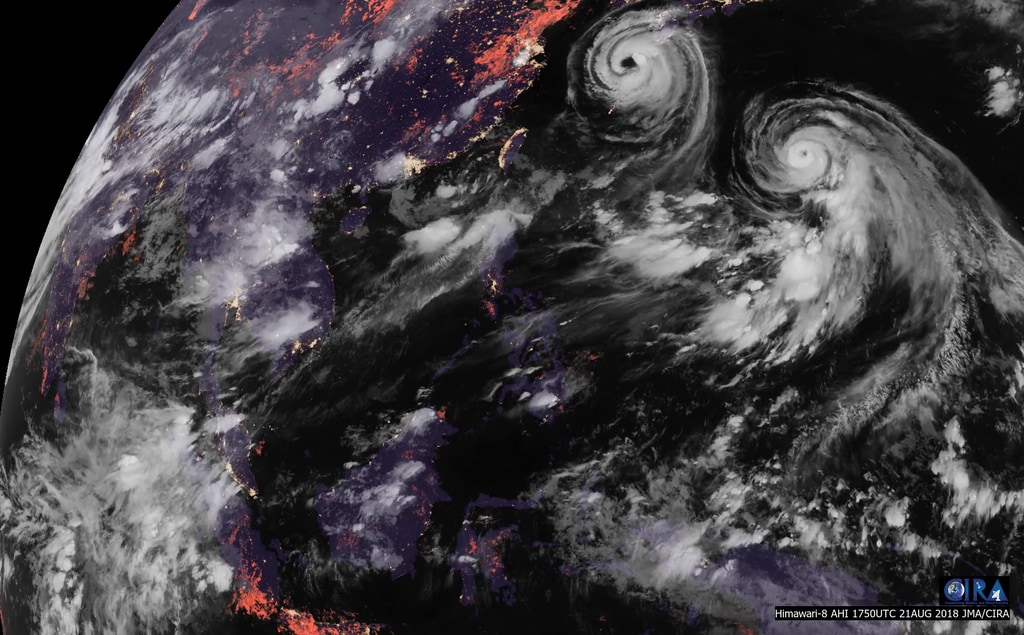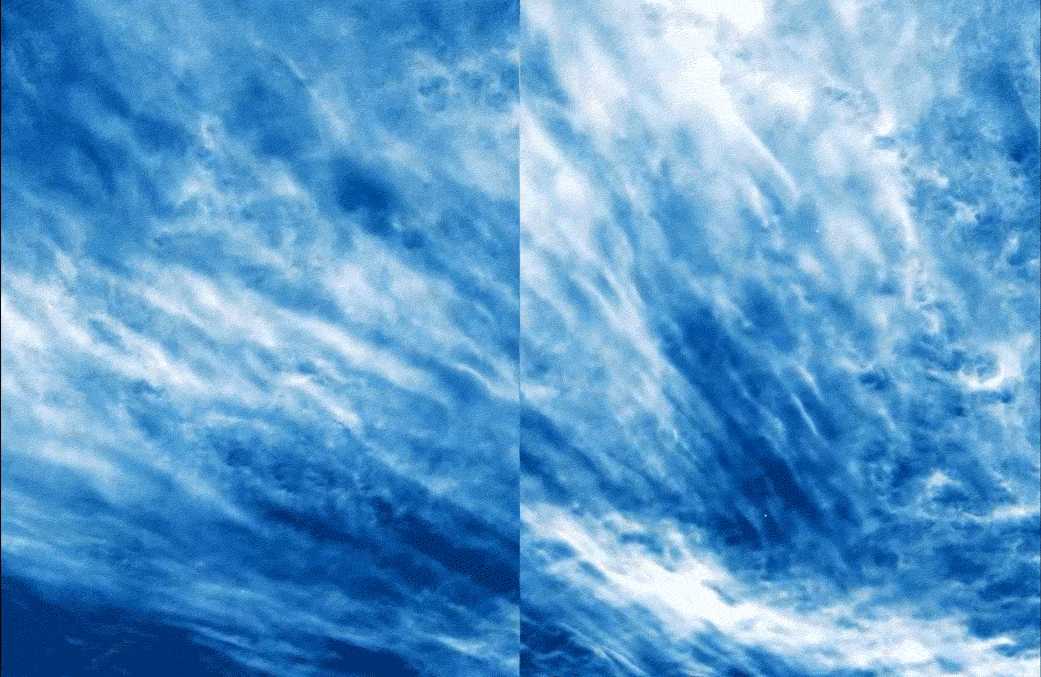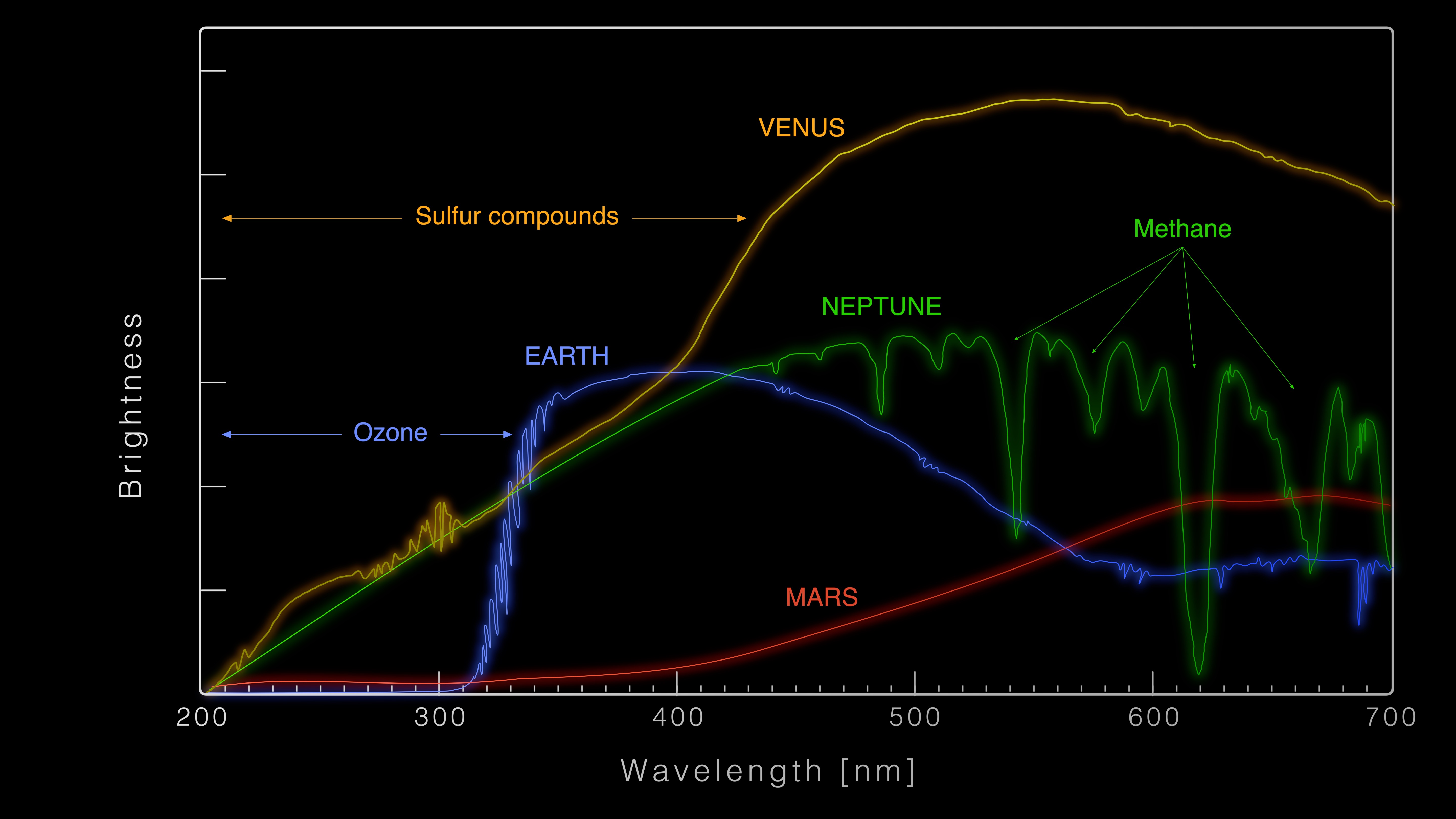Simulated Clouds and Aerosols
GEOS-5 Model Visible
Tiny solid and liquid particles suspended in the atmosphere are called aerosols. Windblown dust, sea salts, sulfates, smoke from wildfires, and pollution from factories are all examples of aerosols. Depending upon their size, type, and location, aerosols can either cool the surface, or warm it. They can help clouds to form, or they can inhibit cloud formation. And if inhaled, some aerosols can be harmful to people’s health. To study aerosols and their impact on clouds, researchers from NASA’s Global Modeling and Assimilation Office ran a simulation of the atmosphere that captured how winds transport aerosols around the world. This simulation, produced by the Goddard Earth Observing System Model Version 5 (GEOS -5), shows clouds (white), dust (brown shades), sulfates (purple shades), and organic black carbon (green shades) at 7-kilometer resolution from September 1, 2005 to December 31, 2005 (hourly). Simulations such as this one allow scientists to better understand how different types of aerosols travel in the atmosphere, impact cloud formation, and influence weather and climate.

Iage from visualization with colorbars
Credits
Please give credit for this item to:
NASA's Scientific Visualization Studio
-
Animator
- William Putman (NASA/GSFC)
-
Project support
- Eric Sokolowsky (Global Science and Technology, Inc.)
Release date
This page was originally published on Wednesday, December 10, 2014.
This page was last updated on Wednesday, February 21, 2024 at 11:21 AM EST.
Datasets used in this visualization
-
GEOS Atmospheric Model
ID: 665
Note: While we identify the data sets used in these visualizations, we do not store any further details, nor the data sets themselves on our site.
